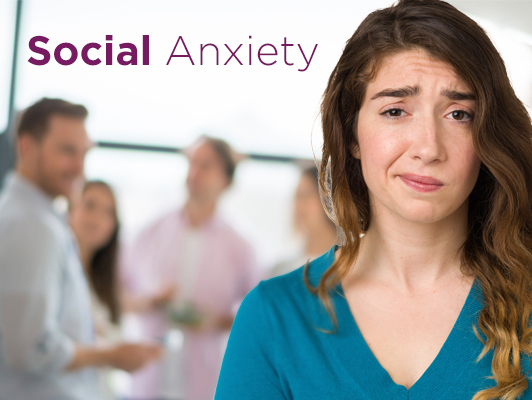Social anxiety
Social anxiety can be a challenging topic to address. Thankfully, there are a variety of ways to treat and manage social anxiety in order to improve your everyday life. Many questions come up when thinking about the difference between “feeling nervous” in social situations and diagnosing social anxiety. Social anxiety is the third most common mental disorder, which poses the question: “How do I know if it’s something more than getting nervous?” That’s a good question. Let’s talk about what social anxiety looks like and what you can do to treat it.
What is social anxiety?
Social anxiety is considered an excessive feeling of worry when anticipating or engaging in social situations. There is a feeling of intense distress and fear of being criticized or judged. Some individuals with social anxiety experience a panic attack, which leads to avoidance of social situations altogether. This can then reinforce the need to feel anxious when faced with a similar situation. Symptoms of social anxiety can include feeling extremely uncomfortable speaking to others, eating in front of others, and having excessive distress about “having all eyes” on them. Overall, social anxiety can impact work, school, social life, and self-esteem.
Causes of social anxiety
- Imbalance of “fight-or-flight” chemical response in brain
- Genetics
- Negative past experience
Symptoms of social anxiety
The following symptoms can occur while thinking about or engaging in social situations:
- Upset stomach
- Rapid heartbeat
- Shaking
- Sweating
What you can do
Good news! There are plenty of options for managing and treating social anxiety. Some options include:
- Cognitive-behavioral therapy
This type of treatment identifies negative thoughts and self-talk that leads to negative feelings and behaviors about a social situation. Identifying negative thoughts and stopping them in their tracks opens up room to find a more positive thought to replace it. - Deep breathing
Practice “belly” breathing leading up to and during a social situation. Practicing when calm can lower cortisol (stress) levels and feel like a “reset” button during stressful situations. To belly breathe, inhale and expand your stomach like a balloon, hold for a moment, and exhale to deflate the balloon. Try to keep your shoulders and chest from rising. - Start small
Understand that Rome wasn’t built in a day, and practice engaging in social situations in short segments. Small successes can build confidence and increase positive experiences with social situations. Building up positive experiences in short segments can make a large social experience feel more doable.




